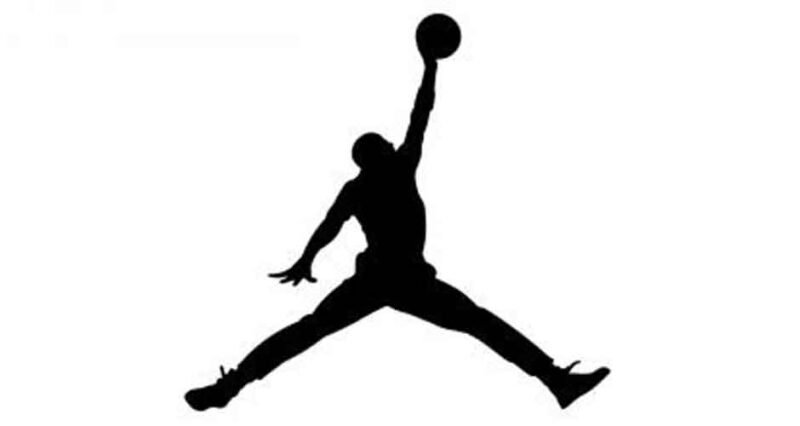
Introduction
The Air Jordan brand has become synonymous with the world of basketball and athletic footwear. Owned by Nike, it continues to revolutionize the industry with its innovative designs and iconic logo—the Jumpman. In this article, we delve into the captivating history and significance of the Jumpman logo, tracing its origins and exploring its enduring impact on both the Air Jordan brand and the sport of basketball.
The Birth of the Jumpman: A Photoshoot and Creative Inspiration
The inception of the Jumpman logo can be traced back to a pivotal moment during a photoshoot for Life magazine, just before the 1984 Olympic Games. At the time, Michael Jordan had yet to sign with Nike. The photographer responsible for capturing the iconic image was Jacobus Rentmeester. The shot featured Jordan in a Team USA Olympic outfit, striking a pose reminiscent of a ballet technique rather than a basketball move.
The Controversy Surrounding the Logo’s Authorship
While Rentmeester claims authorship of the iconic image, the official Jumpman logo was ultimately designed by Tinker Hatfield in 1988. The original photo captured by Rentmeester served as a source of inspiration for Peter Moore, the designer of the Air Jordan 1. However, copyright issues prevented the Life magazine version from being used as the official logo. Instead, Nike licensed the shot for a nominal fee before recreating the jump and transforming it into a poster. The final emblem, as we know it today, was meticulously crafted by Hatfield based on Moore’s initial concept.
The Evolution of Air Jordan: From Shoes to a Global Phenomenon
The Air Jordan brand, launched by Nike in 1984, has revolutionized the sneaker and sportswear industry. Inspired by the unparalleled talent of Michael Jordan, the brand quickly gained popularity among basketball enthusiasts and sneakerheads alike. The first shoe to proudly display the iconic Jumpman logo was the Air Jordan III, released in 1988. Initially, the brand intended to reserve the logo for sports apparel and shoes, excluding it from more upscale collections. However, the overwhelming success and demand for the emblem led to its integration across the entire Air Jordan lineup.
The Essence of the Jumpman: Symbolism and Impact
The Jumpman logo, depicting a silhouette of Michael Jordan mid-leap with a basketball in hand, has transcended its visual representation. It embodies elegance, excellence, and determination, evoking a sense of strength and confidence. The logo has become an enduring symbol of Michael Jordan’s strong will and enigmatic personality, inspiring fans and basketball players worldwide. Over the past three decades, the Jumpman has evolved and expanded into various categories of apparel, including sneakers, socks, hats, and T-shirts. Its enduring presence testifies to its universal appeal and its ability to capture the essence of basketball greatness.
Unveiling the Symbol of Freedom and Power
The Air Jordan logo represents freedom and power, encapsulated in the dynamic leap of Michael Jordan. It serves as a graphical reflection of strength, confidence, and the belief that nothing is impossible. The silhouette of the Jumpman exudes a sense of almightiness, resonating with individuals who aspire to achieve greatness and overcome challenges.
The Ownership and Design of the Iconic Jordan Logo
Contrary to popular belief, the Jumpman logo is not owned by Michael Jordan himself. Instead, it belongs to the Nike company, despite featuring his unmistakable silhouette. The initial Air Jordan Wings logo, seen on the Air Jordan 1 and Air Jordan 2 models, was designed by Peter Moore. The third model of the sneakers, however, underwent a transformation under the guidance of Tinker Hatfield, who refined the iconic Jumpman and repositioned it on the shoe.
The Legend Lives On: Michael Jordan in the Jumpman
The Jumpman logo immortalizes the iconic American basketball player, Michael Jordan. With his extraordinary skills and unparalleled achievements, Jordan has etched his name in sports history. The silhouette of his leaping figure in the logo symbolizes his dominance on the basketball court and serves as a reminder of his impact on the game.
Conclusion
The Air Jordan brand, fueled by the iconic Jumpman logo, continues to captivate the hearts and minds of basketball enthusiasts worldwide. From its humble beginnings to its status as a global phenomenon, the brand’s commitment to excellence and innovation remains unwavering. The Jumpman logo stands as a testament to the legacy of Michael Jordan and the brand’s enduring impact on the sport of basketball. It serves as an emblem of power, inspiration, and the relentless pursuit of greatness—an emblem that continues to unite fans and athletes under the banner of Air Jordan.

